Narayan Sarovar Wildlife Sanctuary is a significant ecological reserve in western India.
Covering an area of around 444 square kilometres, it is one of the few places in India where the endangered chinkara and caracal are found. Established in 1981, the sanctuary is home to a variety of wildlife, including birds, mammals, and reptiles. The region’s arid environment supports unique vegetation, making it an essential habitat for many species. Visitors to the sanctuary can explore diverse wildlife while contributing to the conservation of this vital ecosystem.
Location Of The Narayan Sarovar Wildlife Sanctuary
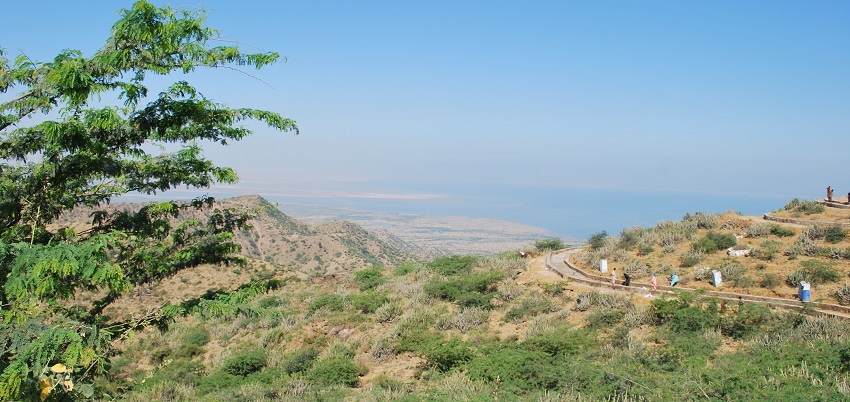
Photo: Raman Patel / Wikimedia Commons / Image For Representation Only
The Narayan Sarovar Wildlife Sanctuary is situated in the Lakhpat Taluka of the Kutch district in Gujarat. This sanctuary is near the Narayan Sarovar, one of the most sacred lakes in Hinduism, and the Koteshwar temple, adding a spiritual dimension to your visit. The sanctuary’s location in the arid region of Kutch provides a unique environment where deserts meet coastal areas, creating a habitat that supports diverse wildlife, including some rare and endangered species.
Suggested Read: Discover Balaram Ambaji Wildlife Sanctuary
How To Reach The Narayan Sarovar Wildlife Sanctuary

Photo: Superfast1111 / Wikimedia Commons
By Road: The Gujarat State Road Transport Corporation (GSRTC) operates regular buses from major cities like Bhuj, Ahmedabad, and Gandhidham to Narayan Sarovar. The journey from Bhuj to Narayan Sarovar takes about 5-6 hours. For a more direct and comfortable journey, hiring a taxi is the best option. Taxis are available from Bhuj, Gandhidham, and other nearby towns. The taxi fare from Bhuj to Narayan Sarovar typically ranges between ₹3000-₹4000.
By Train: The nearest railway station to the Narayan Sarovar Wildlife Sanctuary is Bhuj Railway Station, approximately 150 kilometres away. Bhuj is well-connected with major cities like Mumbai, Ahmedabad, and Delhi. From Bhuj, you can hire a taxi or take a bus to reach the sanctuary. The journey by taxi takes about 3-4 hours, offering a comfortable travel experience.
Places To Visit Around Narayan Sarovar Wildlife Sanctuary
While visiting the Narayan Sarovar Wildlife Sanctuary, consider visiting these nearby attractions:
1. Koteshwar Temple
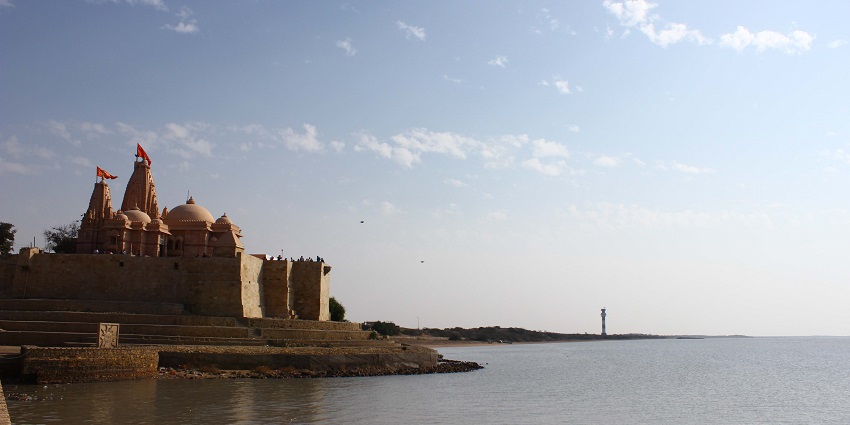
Photo: Ameya ad / Wikimedia Commons
Koteshwar Temple is a revered site dedicated to Lord Shiva, located near the Arabian Sea. This ancient temple holds great spiritual significance as one of the last mainland points before India meets the ocean. The temple’s architecture reflects its deep historical roots, drawing devotees and history enthusiasts. Beyond its religious importance, the temple offers visitors an opportunity to witness the coastal area, where the land merges with the vast sea, providing a moment of reflection and peace.
Distance From Narayan Sarovar Wildlife Sanctuary: 3 km
Timings: 6 AM – 7 PM
Suggested Read: Explore Gaga Wildlife Sanctuary
2. Narayan Sarovar Lake
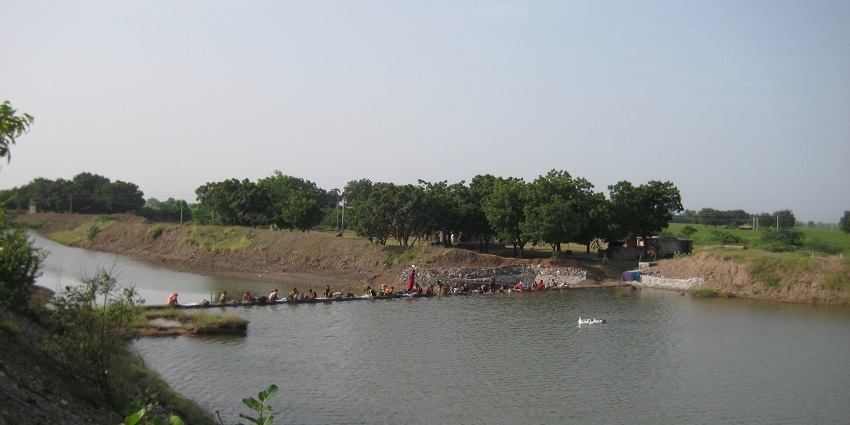
Photo: Raman Patel / Wikimedia Commons
Narayan Sarovar Lake is one of Hinduism’s holiest water bodies, positioned close to Narayan Sarovar Wildlife Sanctuary. This sacred lake, steeped in ancient mythology, draws pilgrims year-round who seek spiritual solace and connection. Visitors to the lake can experience a peaceful atmosphere, perfect for meditation or quiet contemplation. The surrounding environment enhances the lake’s spiritual aura, offering a place where one can both appreciate the natural beauty and engage in introspective practices, making it a must-visit for those on a spiritual journey.
Distance From Narayan Sarovar Wildlife Sanctuary: 2 km
Timings: 6 AM – 6 PM
3. Lakhpat Fort

Photo: Aalokmjoshi / Wikimedia Commons
Lakhpat Fort is a historical site that once served as a thriving port town. Today, it stands as a silent witness to the past, offering insights into the region’s rich history. The fort’s remains, including its walls and ancient structures, provide a glimpse into the life that once flourished here. Visitors can explore the fort’s ruins while taking in views of the expansive Rann of Kutch, making it a fascinating destination for history buffs and adventurers alike.
Distance From Narayan Sarovar Wildlife Sanctuary: 30 km
Timings: 9 AM – 5 PM
Suggested Read: Discover Kutch Desert Wildlife Sanctuary
4. Banni Grassland Reserve
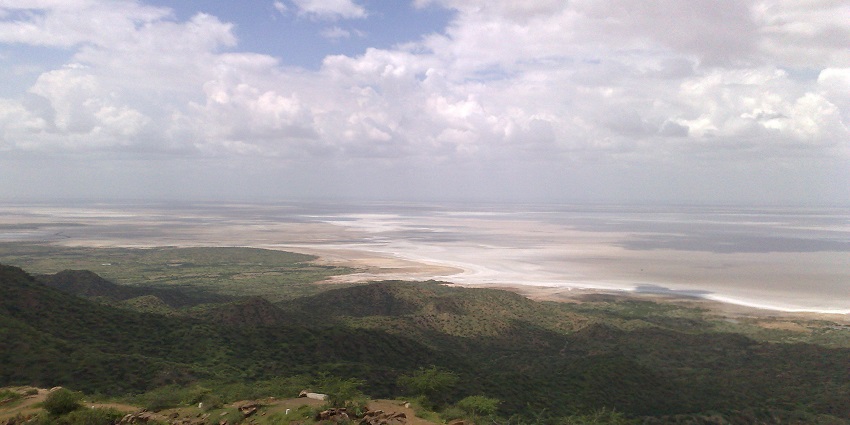
Photo: Superfast1111 / Wikimedia Commons
The Banni Grassland Reserve is a vast area known for its rich biodiversity. This reserve is home to numerous species, including a variety of migratory birds that flock here annually. The region is also famous for hosting the Rann Utsav, a cultural festival that celebrates the vibrant heritage of Kutch. Visitors to Banni can experience the diverse flora and fauna while also gaining insights into the local culture, making it a destination that offers both natural and cultural enrichment.
Distance From Narayan Sarovar Wildlife Sanctuary: 100 km
Timings: 6 AM – 6 PM
5. Kalo Dungar
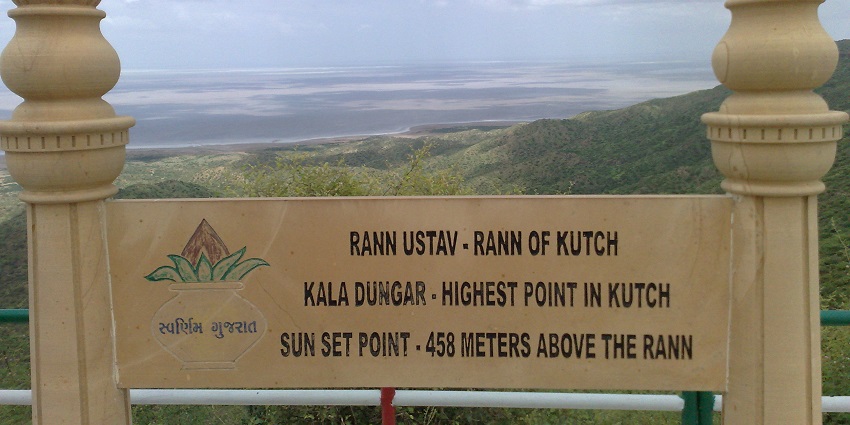
Photo: Superfast1111 / Wikimedia Commons
Kalo Dungar, also known as Black Hill, is the highest point in the Kutch region. The hill provides a striking view of the Great Rann of Kutch, especially at sunset, making it a popular spot for visitors. The area is also home to the Dattatreya Temple, which draws both pilgrims and tourists. Kalo Dungar offers not only a spiritual experience but also a chance to appreciate the unique geographical features of the region, making it a highlight of any trip to Kutch.
Distance From Narayan Sarovar Wildlife Sanctuary: 90 km
Timings: 6 AM – 6 PM
Suggested Read: Explore Rampara Wildlife Sanctuary
Where To Stay
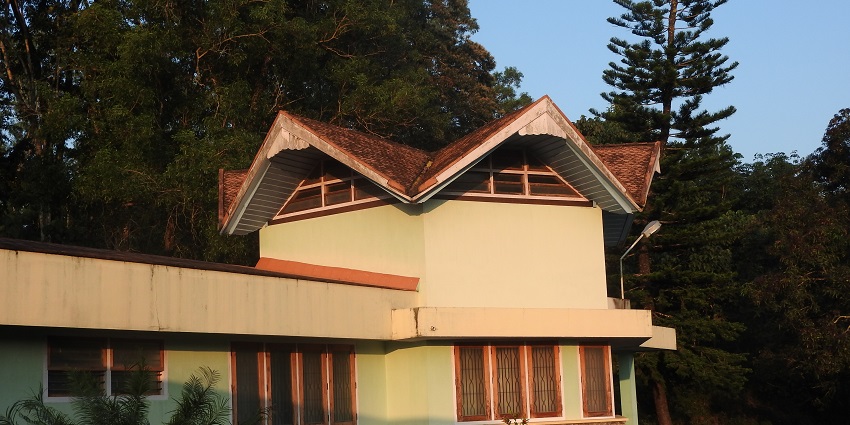
Photo: Yercaud-elango / Wikimedia Commons / Image For Representation Only
When visiting Narayan Sarovar Wildlife Sanctuary, accommodation options vary from basic guesthouses to more comfortable lodges. The Narayan Sarovar Guest House, managed by the Gujarat Tourism Department, is a convenient choice, offering essential amenities and easy access to nearby attractions. For those seeking more comfort, Bhuj, located a bit farther away, provides a range of hotels with additional services and facilities. Staying in Bhuj allows visitors to explore both the sanctuary and the cultural sites within the city, providing a balanced experience of nature and local heritage.
Where To Eat

Photo: Nizil Shah / Wikimedia Commons
Dining near Narayan Sarovar Wildlife Sanctuary is limited to a few local eateries, which primarily serve traditional Gujarati dishes. The in-house restaurant at Narayan Sarovar Guest House offers simple vegetarian meals, providing a convenient option for guests. However, for a wider selection of culinary choices, including Indian and international cuisine, visitors may need to travel to Bhuj. In Bhuj, a variety of restaurants cater to diverse tastes, ensuring that visitors can enjoy different types of food while exploring the cultural and natural sites of the region.
Suggested Read: Taranga Hill Wildlife Sanctuary
Best Time To Visit
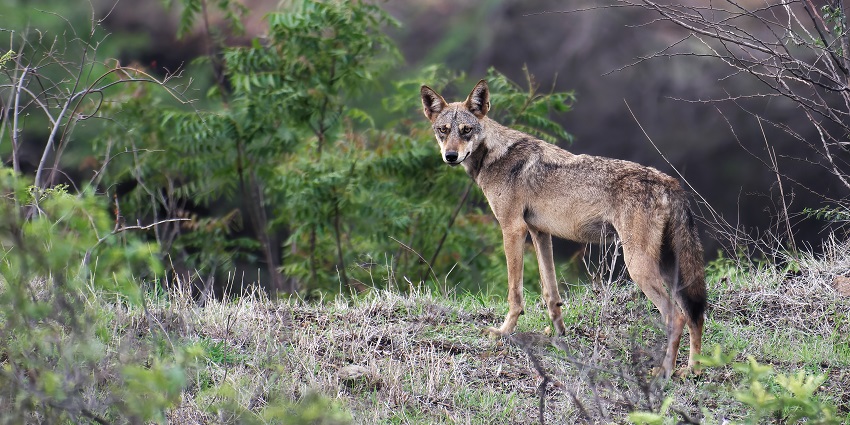
Photo: Shiv’s fotografia / Wikimedia Commons
The ideal period to visit Narayan Sarovar Wildlife Sanctuary is from November to February when the weather is pleasant and suitable for outdoor activities. During these months, the temperature ranges between 12°C and 25°C, making it comfortable for wildlife observation and exploring the sanctuary’s natural surroundings. Visitors during this time can enjoy the sanctuary at its best, with increased opportunities to spot various species and appreciate the region’s natural beauty. The monsoon season is less favourable due to heavy rains that can make access challenging.
Other Factors To Consider

Photo: Daniel Schwen / Wikimedia Commons / Image For Representation Only
Average Cost Of Trip
A trip to the Narayan Sarovar Wildlife Sanctuary can be budget-friendly, with average costs ranging from ₹5000 to ₹10,000 ($60 to $120), depending on the mode of transport, accommodation, and other expenses. The Narayan Sarovar Wildlife Sanctuary ticket price is approximately ₹82 ($1), which is an additional cost to consider. Hiring a taxi or opting for higher-end accommodation can increase the overall cost of the trip.
Tips For Travellers
- Carry sufficient water and snacks, as food options near the sanctuary are limited.
- Wear comfortable clothing and sturdy shoes for exploring the sanctuary.
- Bring binoculars and a camera to enhance your wildlife viewing experience.
- Check the Narayan Sarovar Wildlife Sanctuary timing before planning your visit to ensure you arrive during operating hours.
- Respect the local culture and traditions when visiting nearby religious sites.
Suggested Read: Wildlife Sanctuaries In Gujarat
The Narayan Sarovar Wildlife Sanctuary provides a harmonious experience where nature meets spirituality, offering something for both wildlife enthusiasts and pilgrims. Home to diverse species and close to revered sites, it stands out as a destination that satisfies both the desire for natural exploration and spiritual connection. With TripXL, you can plan a well-organised and enriching visit to the Narayan Sarovar Wildlife Sanctuary.
Cover Photo: Raman Patel / Wikimedia Commons


 WhatsApp
WhatsApp
 Twitter
Twitter









